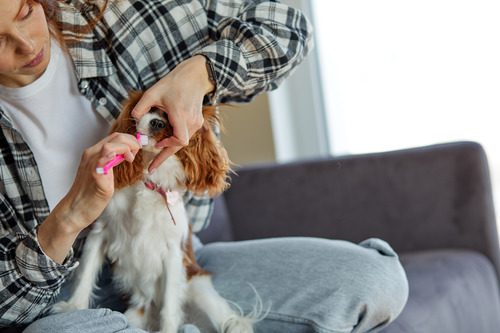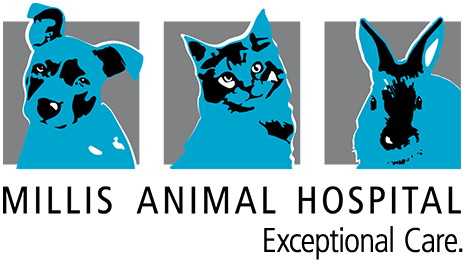Oral hygiene is a crucial aspect of your dog’s overall health. Maintaining clean and healthy teeth not only prevents bad breath but also helps avoid more severe health issues. Learning how to brush dog teeth effectively can make a significant difference in your pet’s well-being. This blog will guide you through the steps, techniques, and tips to ensure that your dog’s teeth stay clean and healthy.

The Importance of Brushing Your Dog’s Teeth
Brushing your dog’s teeth is essential for preventing dental diseases such as gingivitis, periodontal disease, and tooth decay. Just like humans, dogs can develop plaque and tartar buildup, leading to painful and costly dental problems. Regular brushing can help remove food particles and bacteria, promoting better oral hygiene and preventing the spread of infection to other parts of the body.
Dental problems can lead to more than just bad breath and discomfort. They can cause your dog to lose teeth and may even lead to systemic issues like heart disease, liver disease, and kidney disease if bacteria from the mouth enter the bloodstream. Therefore, establishing a routine for brushing your dog’s teeth is a proactive way to safeguard their health.
Choosing the Right Tools for Brushing
Selecting the appropriate tools for brushing your dog’s teeth is a critical first step. You will need a dog-specific toothbrush and toothpaste. Dog toothbrushes are designed with angled handles and soft bristles to reach all areas of your dog’s mouth comfortably. They come in various sizes, so choose one that fits your dog’s mouth size.
Appropriate Toothpaste
Dog toothpaste is another essential component. Human toothpaste contains fluoride and other ingredients that can be harmful to dogs if swallowed. Dog toothpaste comes in flavors like poultry, beef, and peanut butter, making the experience more enjoyable for your pet. Look for products that are enzymatic, as they can help break down plaque and tartar effectively.
Introducing Your Dog to Brushing Tools
Start by letting your dog get familiar with the toothbrush and toothpaste. Allow them to sniff and lick the toothpaste from your finger, gradually moving to the toothbrush. This introduction helps your dog associate the tools with a positive experience, reducing resistance during actual brushing.
Step-by-Step Guide to Brushing Dog Teeth
Creating a calm and stress-free environment is essential when brushing your dog’s teeth. Here’s a detailed step-by-step guide on how to brush dog teeth effectively:
- Prepare the Tools: Gather the toothbrush, toothpaste, and some treats as rewards. Ensure your dog is in a comfortable position and is calm.
- Lift the Lips: Gently lift your dog’s lips to expose their teeth. If your dog is anxious, do this slowly and speak in a soothing voice.
- Brush in Small Circles: Apply a small amount of toothpaste to the toothbrush. Start brushing gently in small circles, focusing on the gum line where plaque and tartar accumulate.
- Brush All Teeth: Ensure you brush all teeth, including the molars and canines. Pay extra attention to the back teeth where plaque buildup is common.
- Short Sessions: Initially, keep the sessions short, gradually increasing the duration as your dog becomes more comfortable.
- Reward Your Dog: After brushing, reward your dog with a treat or extra playtime to reinforce positive behavior.
Handling a Resistant Dog
Some dogs may resist having their teeth brushed. If your dog is particularly uncooperative, try breaking the process into smaller steps over several days. Start by simply lifting their lips and touching the toothbrush to their teeth without brushing. Gradually increase the level of brushing each day.
Frequency and Maintenance of Brushing
How often should you brush your dog’s teeth? Ideally, brushing should be done daily to maintain optimal oral health. However, if daily brushing is not feasible, aim for at least three to four times a week. Consistency is key in preventing plaque and tartar buildup.
On-Going Care
In addition to brushing, consider incorporating dental chews and toys designed to help clean teeth and massage gums. These can be excellent supplements to your dog’s oral hygiene routine. Regular dental check-ups at Millis Animal Hospital are also vital. Our veterinarians can provide professional cleanings and check for any signs of dental issues that may need attention.
Signs of Dental Problems
Be aware of signs that may indicate dental problems in your dog. These include:
- Bad breath
- Red or swollen gums
- Difficulty eating
- Excessive drooling
- Loose or missing teeth
If you notice any of these symptoms, contact Millis Animal Hospital at 508-376-5317 to schedule an appointment.
Additional Tips for Effective Brushing
Here are some additional tips to make brushing your dog’s teeth easier and more effective:
- Introduce brushing when your dog is a puppy. Early exposure can make the process easier as they grow older.
- Keep the experience positive with praise and rewards. This helps your dog associate brushing with positive outcomes.
- If a toothbrush is too challenging, try using a finger brush. This can provide more control and comfort for both you and your dog.
- Make brushing a part of your dog’s daily routine. Consistency helps establish a habit and reduces resistance.
- Always consult your veterinarian for personalized advice and recommendations based on your dog’s specific needs.
Enhancing Your Dog’s Oral Health
Brushing your dog’s teeth is a simple yet effective way to enhance their oral health and overall well-being. By following the steps outlined in this blog and incorporating regular dental care into your dog’s routine, you can help prevent dental diseases and ensure a healthier, happier life for your furry friend. For more information or to schedule a dental check-up, call Millis Animal Hospital at 508-376-5317. Our team is here to support you and your pet with professional advice and care.
Recent Posts
About Us
Millis Animal Hospital is a privately owned AAHA-accredited, Cat-Friendly Certified practice staffed with Fear Free Certified professionals. We know a thing or two about treating pets and their families the way they deserve, with excellent preventive care and surgical services tailored to your individual needs.
